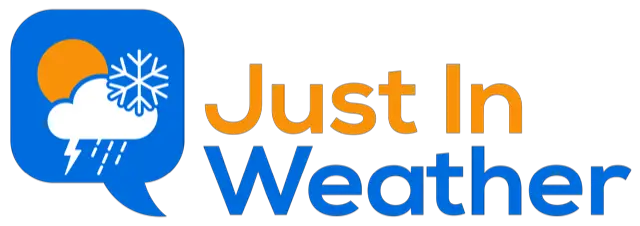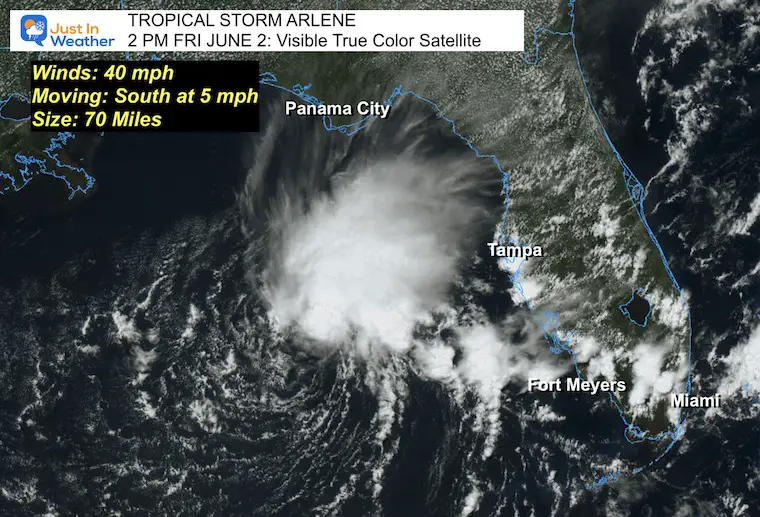Drought Building Into June With Little Relief In Sight
June 2, 2023
Remember the winter we just had with record-low snow and mild temperatures? That is part of what we can blame for our current environmental concern. The other has been the lack of rainfall. Combined, we have a deep deficit from how much rainfall we should have, which in turn is affecting soil moisture, streamflow, and groundwater.
If you have a lawn turning brown or a garden thirsty for extra water, that pales in comparison to many area farms. If conditions persist, crops will be struggling.
As we enter this month of June, the higher sun angle and longer days results in the maximum evaporation we get all year. Thankfully our temperatures have been cooler than average. But we still have a setup with little rain forecast to rapidly increase our building drought.
Rainfall Measuring
Using the reporting station for Baltimore at BWI Airport, we can get a sense of what the region has been experiencing. I compared the monthly observations for precipitation to the average. We can see the only month above average was April.
- Jan -1.40
- Feb -0.72
- Mar -2.52
- Apr +0.73
- May -3.30
TOTAL = -7.34”
This is a BIG HOLE to climb out of for any help!
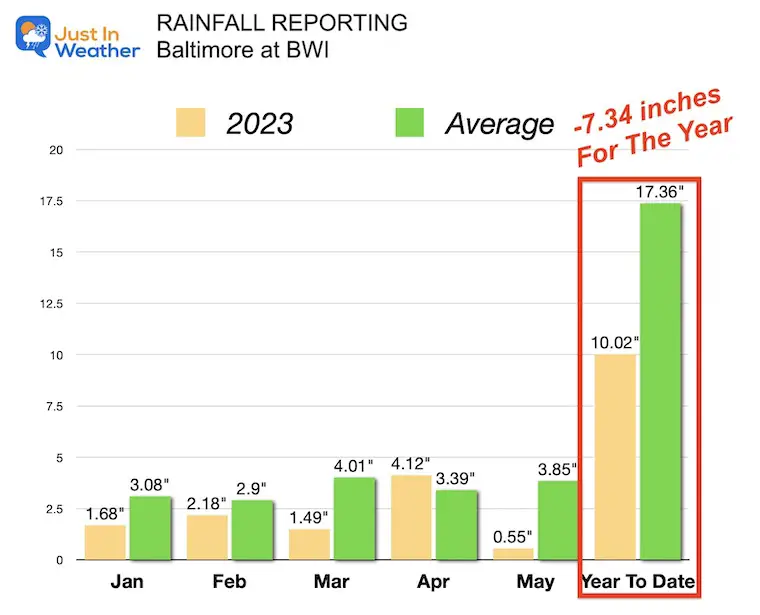
Many lawns are ‘burning’ or drying up to brown grass. The farmers with limited or no irrigation are hurting as well.
This jumps out because the most significant deficit has occurred during the peak of the growing season. So the lack of winter snow AND lack of spring rain is really starting to show for farmers and gardens.
According to the US Drought Monitor:
Maryland has 78% percent in the dry to very dry rating.
Estimated Population in Drought Areas: 2,609,534.
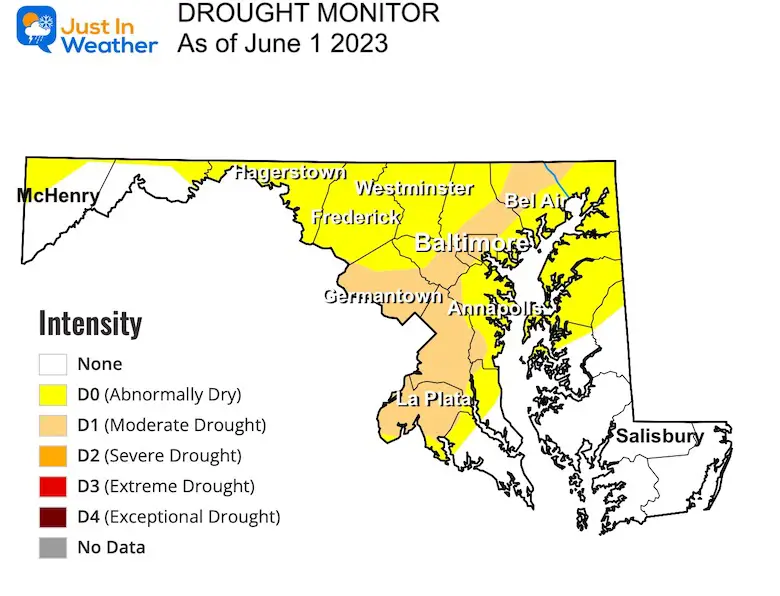
Pennsylvania has 80% of topsoil as dry to very dry. That is an increase of 48% since the week before.
Estimated Population in Drought Areas: 990,203
Northern Virginia has the 90 day dryness intensifying.
Estimated Population in Drought Areas: 1,579,574.
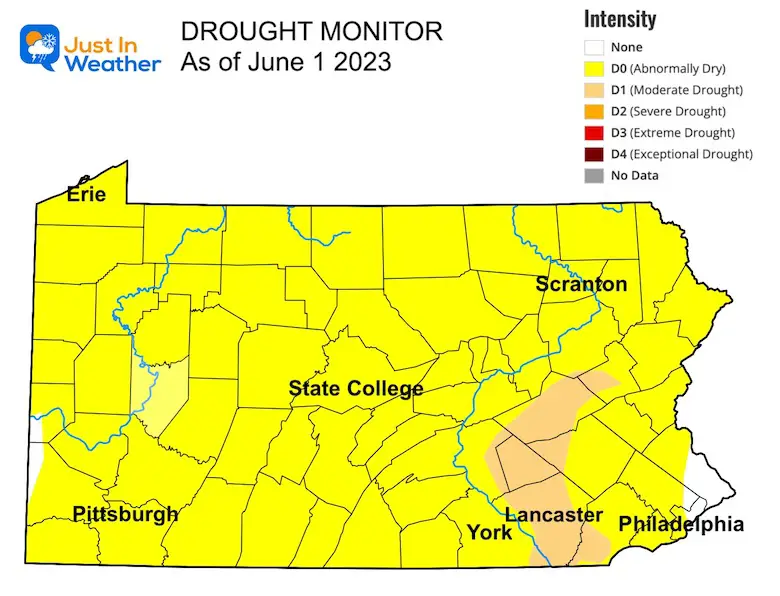
New Report:
Tropical Storm Arlene: First Named Storm Of The Season Forms In The Gulf
Virginia
Mainly the extreme northern part of the state near Washington, DC.
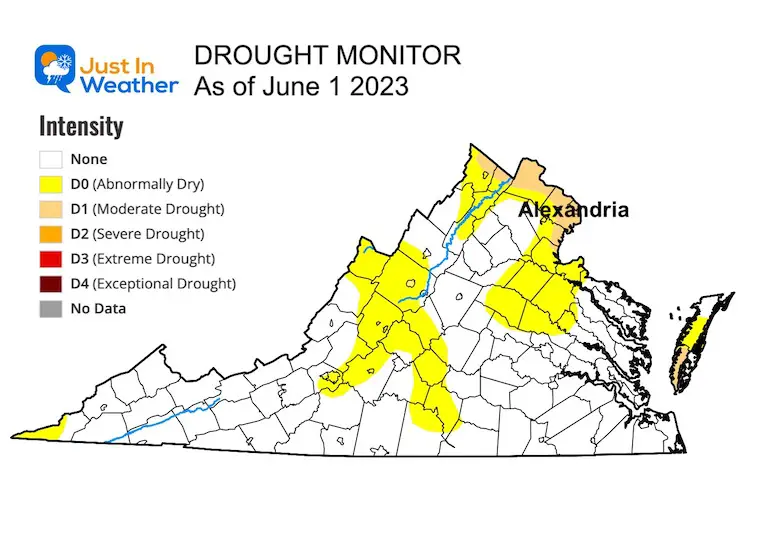
Northeast Region:
U.S. Drought Monitor Report
With soil drying, low streamflow, and very low precipitation for the month of May, D0 (abnormal dryness) was expanded across much of the region, from Delaware, Maryland, and West Virginia to southern New York, and from western Maine to western Massachusetts.
Large 90-day precipitation deficits prompted the expansion of D1 (moderate drought) in Maryland and eastern Pennsylvania. Soils rapidly dried this week. According to May 28 data from the U.S. Department of Agriculture (USDA), 80% of the topsoil moisture in Pennsylvania was rated short or very short (dry or very dry), an increase of 48% from last week. The values were 100% for New Jersey, 78% for Maryland, and 52% for New York.
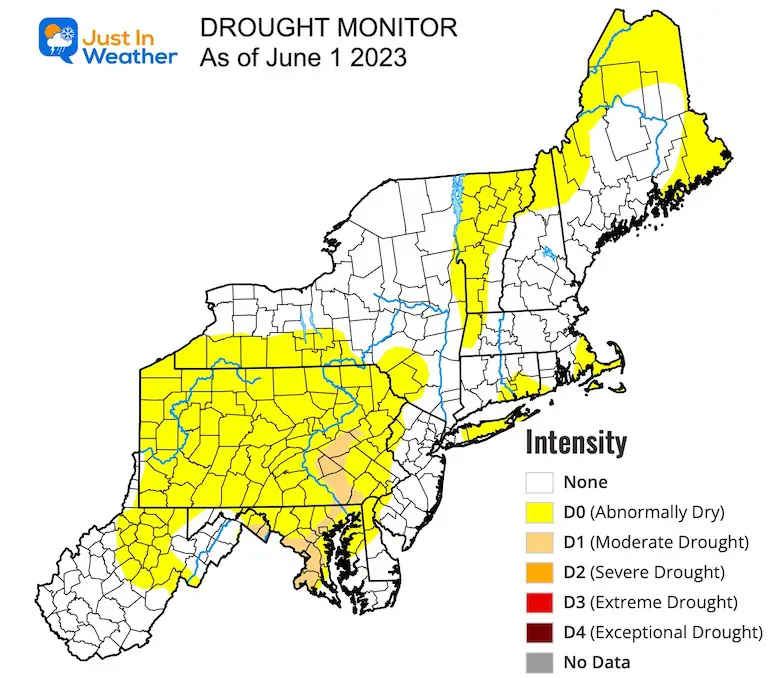
Rainfall Outlook
It’s not very good! Overall we have some showers forecast Saturday and maybe one or two days next week with scattered showers. Those will be hit or miss. Not a widespread event and unless a lucky slow-moving heavy downpour sets up, it will not be enough to make a dent.
Week Ahead: ECMWF Model
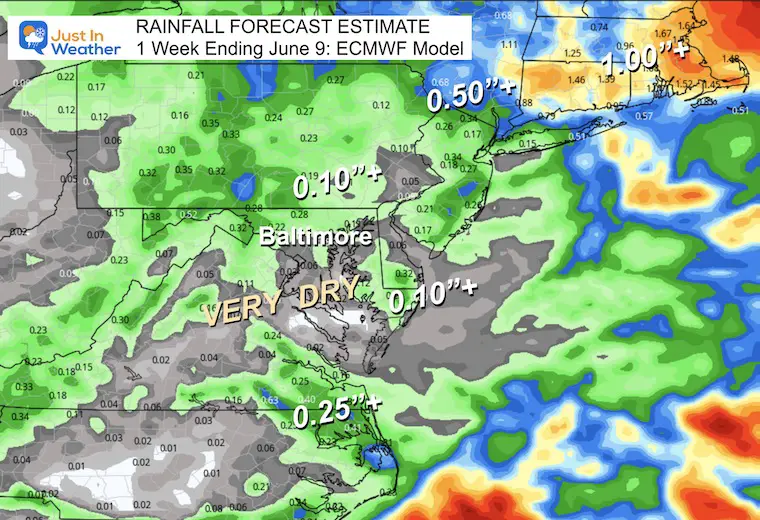
Next 2 Weeks: GFS Model
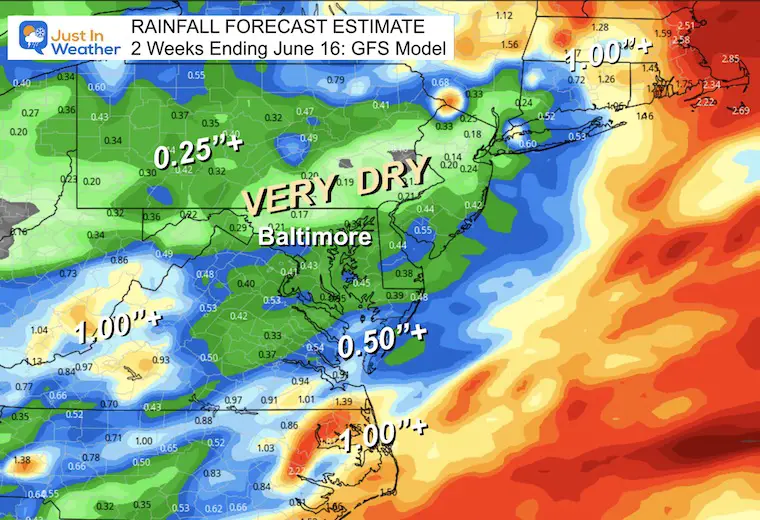
Subscribe for eMail Alerts
Weather posts straight to your inbox
Sign up and be the first to know!
Also See:
La Niña Has Ended. El Niño May Return By Fall
Aurora Photos From Maryland, Delaware, and Virginia
Please share your thoughts, best weather pics/videos, or just keep in touch via social media
-
Facebook: Justin Berk, Meteorologist
-
Twitter
-
Instagram
RESTATING MY MESSAGE ABOUT DYSLEXIA
I am aware there are some spelling and grammar typos, and occasional other glitches. I take responsibility for my mistakes, and even the computer glitches I may miss. I have made a few public statements over the years, but if you are new here you may have missed it: I have dyslexia, and found out during my second year at Cornell University. It didn’t stop me from getting my meteorology degree, and being first to get the AMS CBM in the Baltimore/Washington region. One of my professors told me that I had made it that far without knowing, and to not let it be a crutch going forward. That was Mark Wysocki and he was absolutely correct! I do miss my mistakes in my own proofreading. The autocorrect spell check on my computer sometimes does an injustice to make it worse. I also can make mistakes in forecasting. No one is perfect predicting the future. All of the maps and information are accurate. The ‘wordy’ stuff can get sticky. There has been no editor that can check my work when I needed it and have it ready to send out in a newsworthy timeline. Barbara Werner is a member of the web team that helps me maintain this site. She has taken it upon herself to edit typos, when she is able. That could be AFTER you read this. I accept this and perhaps proves what you read is really from me… It’s part of my charm.
#FITF



